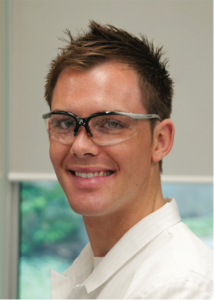Take a look at these new HOT articles just published in Analyst! These papers will be free to read for the next three weeks. Download them today!
The global identification of tRNA isoacceptors by targeted tandem mass spectrometry
Collin Wetzel and Patrick A. Limbach
Analyst, 2013,138, 6063-6072
DOI: 10.1039/C3AN01224G
Extraction and separation of proteins by ionic liquid aqueous two-phase system
Xiao Lin, Yuzhi Wang, Qun Zeng, Xueqin Ding and Jing Chen
Analyst, 2013, Advance Article
DOI: 10.1039/C3AN01301D
A smart T1-weighted MRI contrast agent for uranyl cations based on a DNAzyme–gadolinium conjugate
Weichen Xu, Hang Xing and Yi Lu
Analyst, 2013, Advance Article
DOI: 10.1039/C3AN01182H
Improved analysis of oligosaccharides for matrix-assisted laser desorption/ionization time-of-flight mass spectrometry using aminopyrazine as a derivatization reagent and a co-matrix
Yan Cai, Ying Zhang, Pengyuan Yang and Haojie Lu
Analyst, 2013, Advance Article
DOI: 10.1039/C3AN01228J
A chemical quenching- and physical blocking-based method to minimize process-mediated aggregation of antibody-crosslinked nanoparticles for imaging application
Chandra K. Dixit, Shibsekhar Roy, Conor Byrne, Richard O’Kennedy and Colette McDonagh
Analyst, 2013, Advance Article
DOI: 10.1039/C3AN01294H
Exploring the electrochemical performance of graphitic paste electrodes: graphene vs. graphite
Luiz C. S. Figueiredo-Filho, Dale A. C. Brownson, Maria Gómez-Mingot, Jesús Iniesta, Orlando Fatibello-Filho and Craig E. Banks
Analyst, 2013, Advance Article
DOI: 10.1039/C3AN00950E
An investigation into the simultaneous enzymatic and SERRS properties of silver nanoparticles
Kristy S. McKeating, Sian Sloan-Dennison, Duncan Graham and Karen Faulds
Analyst, 2013, Advance Article
DOI: 10.1039/C3AN01451G
Electrochemical piezoelectric-excited millimeter-sized cantilever (ePEMC) for simultaneous dual transduction biosensing
Blake N. Johnson and Raj Mutharasan
Analyst, 2013, Advance Article
DOI: 10.1039/C3AN01353G

















 Joseph Wang
Joseph Wang
